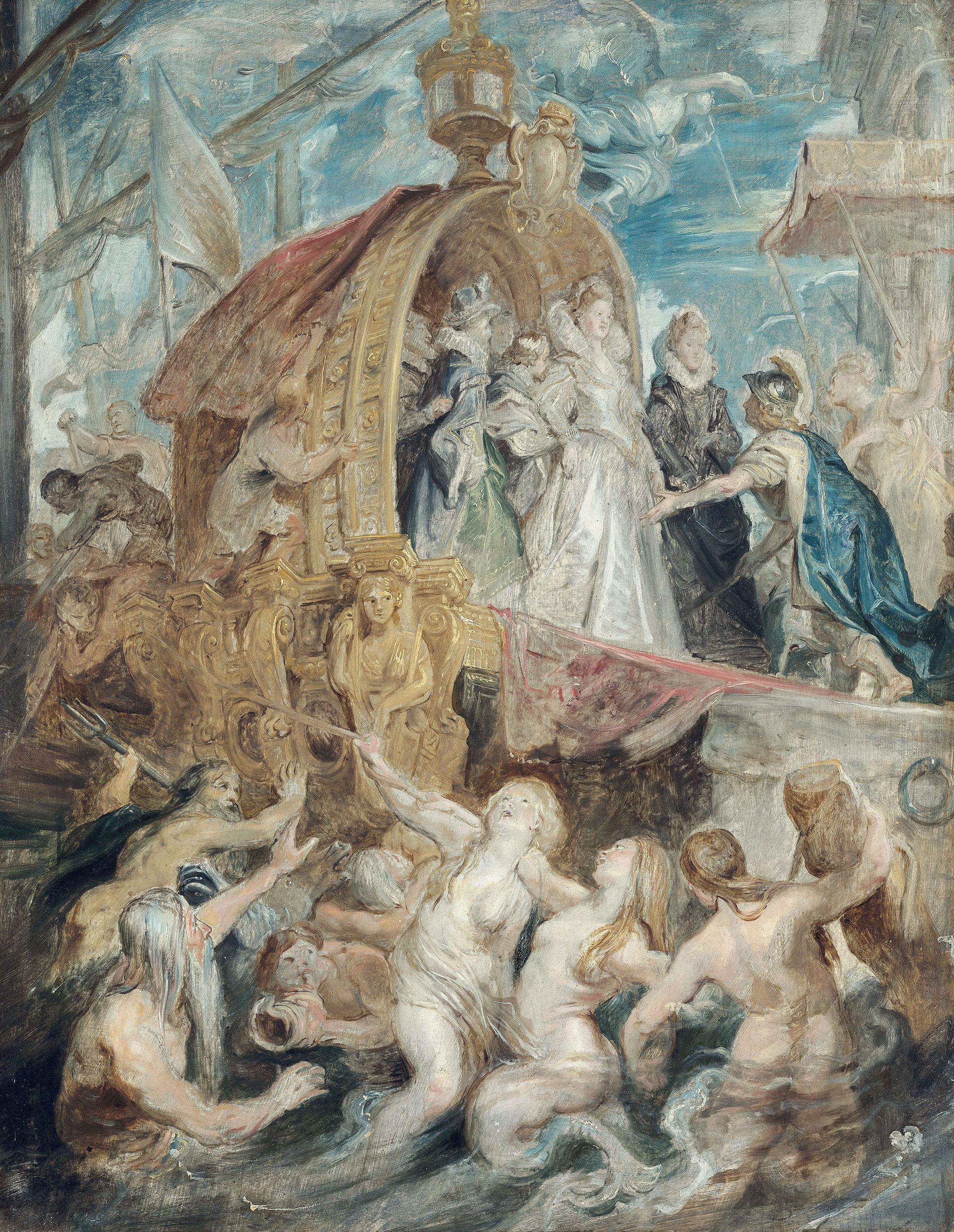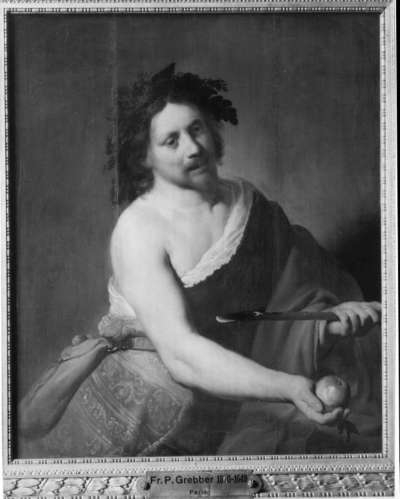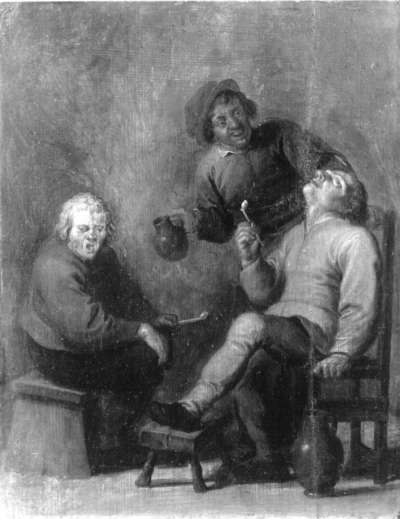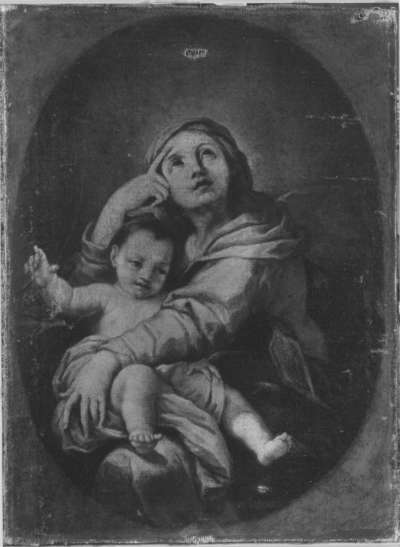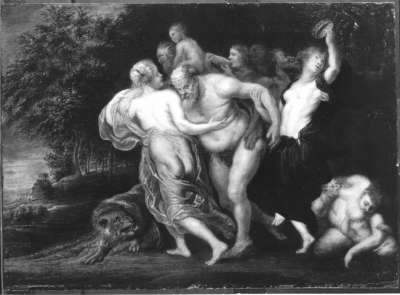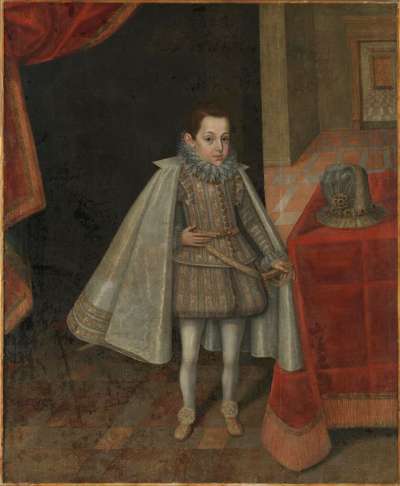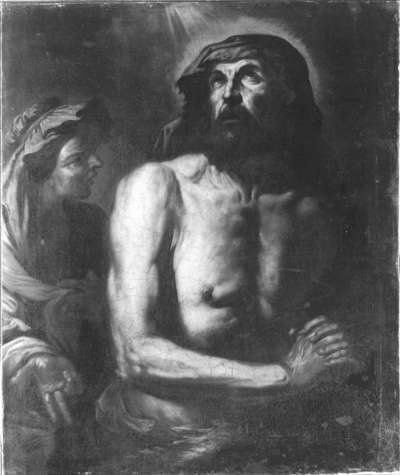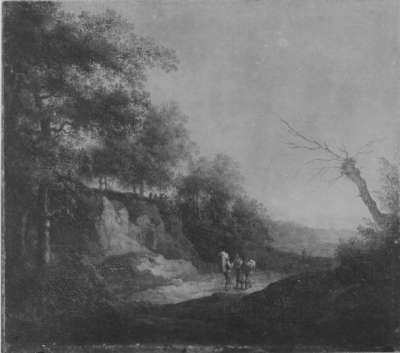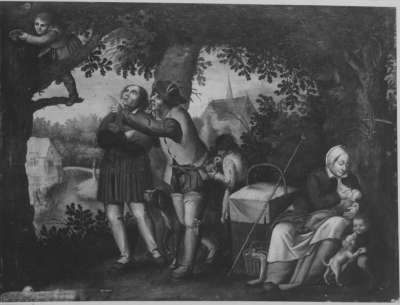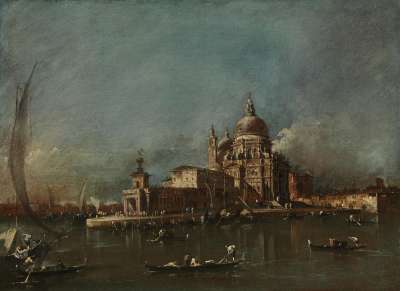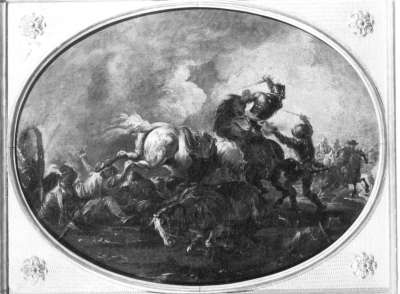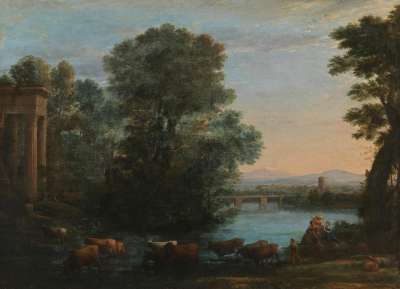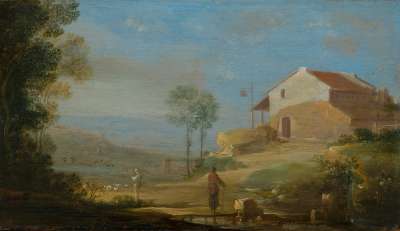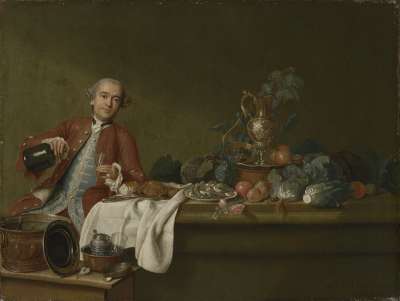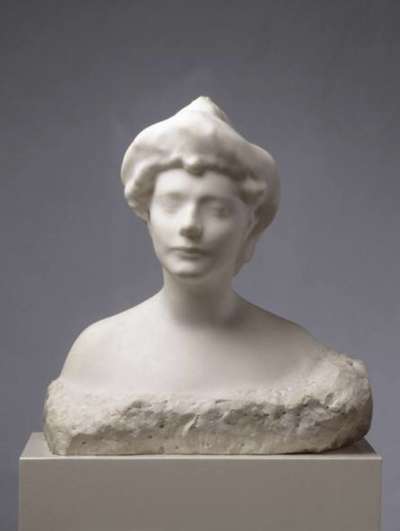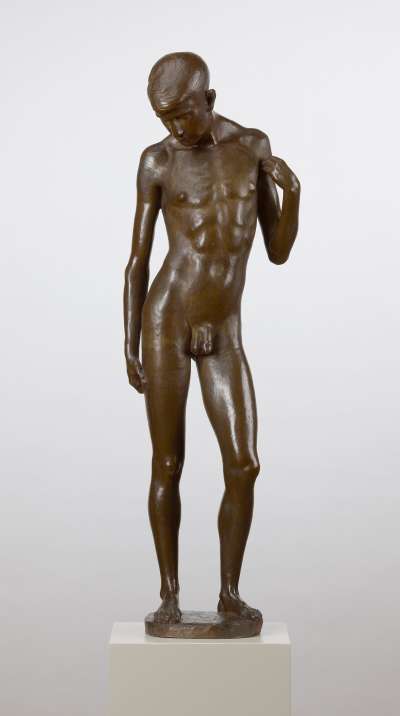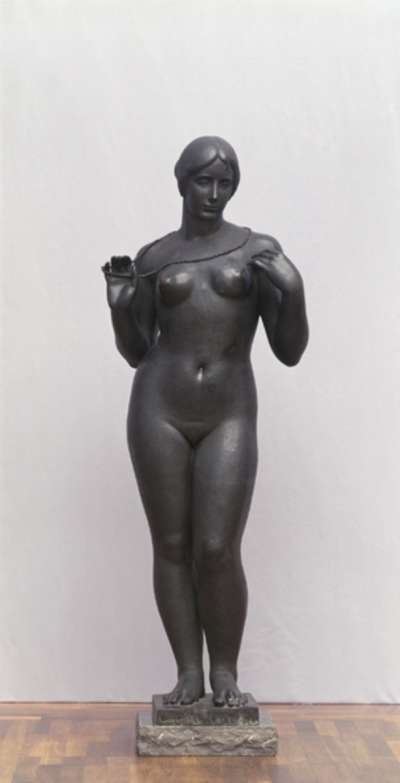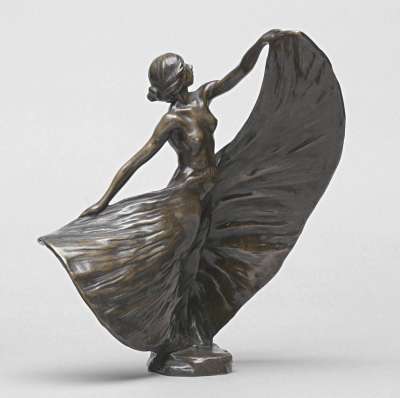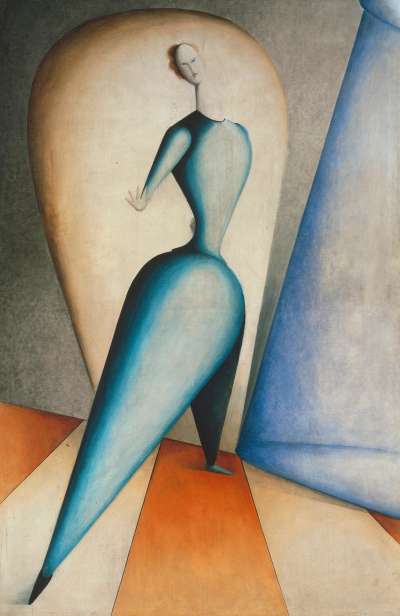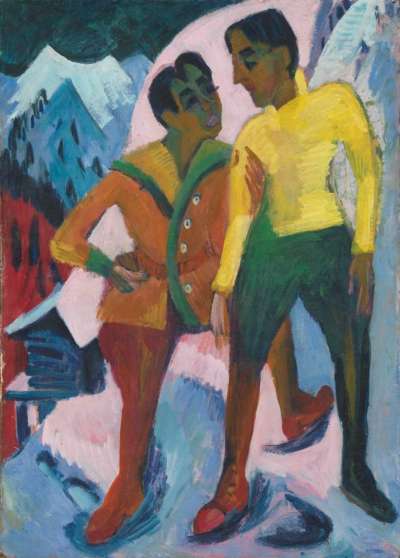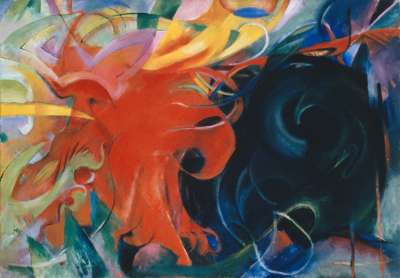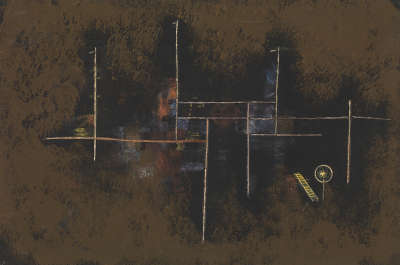Peter Paul Rubens
(1577-1640)
Die Landung in Marseille (Skizze zum Medici-Zyklus),
1622
Material / Technology / Carrier
Holz
Dimensions of the object
64 x 50 cm
Displayed
AP OG Kabinett 12
Acquisition
Aus der Kurfürstlichen Galerie München
Stock
Bayerische Staatsgemäldesammlungen - Alte Pinakothek München
Citation
Peter Paul Rubens, Die Landung in Marseille (Skizze zum Medici-Zyklus), 1622, Bayerische Staatsgemäldesammlungen - Alte Pinakothek München, URL: https://www.sammlung.pinakothek.de/en/artwork/534703Zx9e (Last updated on 28.08.2023)
The future Queen is received by Marsilia, along with Francia, the personification of France, in the style of an entrée solennelle, the ceremonial procession of the prince through the city. The Medici coat of arms refers to Florence, her home up until that time.
On 26 February, 1622, Rubens was commissioned to depict the life and political achievements of Marie de’ Medici in a cycle of twenty-four paintings. The widow of Henry IV (who had been assassinated in 1610), had just taken up residence in the Palais du Luxembourg. Its representative furnishing, for which the cycle was intended, clearly reveals her ambitions.
Rubens was faced with the difficult task of presenting the queen’s controversial political influence in a positive light. Following the death of her husband she had acted as regent for the heir to the throne who was still underage at that time. Her political successes were to be glorified and the prospect of a hopefully happy future depicted. By strengthening the power of the nobility and forging links with the Habsburgs she had, however, followed a fundamentally different policy to that of her son King Louis XIII. With the support of his adviser Armand-Jean du Plessis, the Duke of Richelieu, who was later made a cardinal, Louis strove to ensure France’s hegemony through absolutism. Enduring conflicts led to Marie de’ Medici being exiled to Blois in 1617, from where she had just returned to Paris when Rubens accepted the commission. At this time, the agenda of this cycle of works had not yet been finalised, and it was revised several times. The Munich oil sketches are preparatory works for the monumental paintings now in the Louvre. While they were primarily intended for use in Rubens’s workshop it is, however, quite probable that preliminary sketches were presented to the queen.
